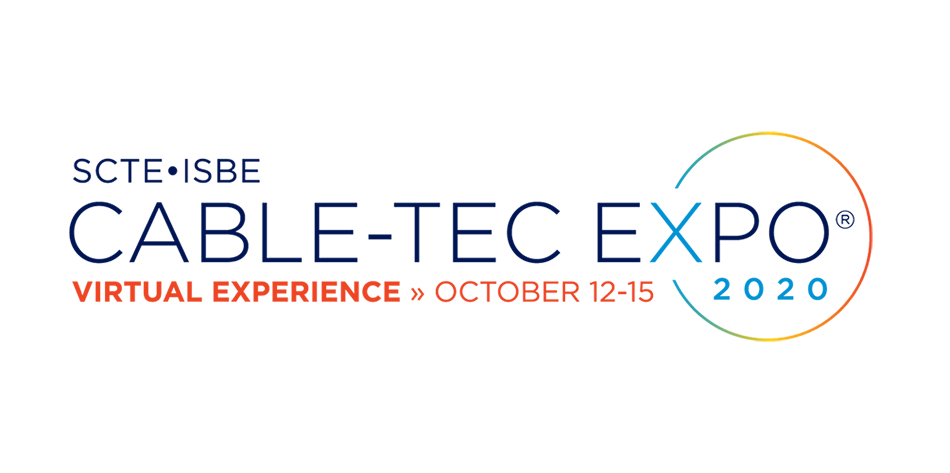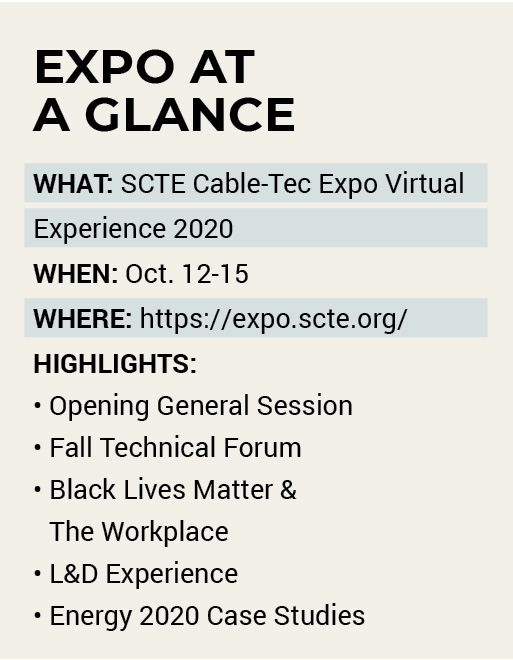Cable-Tec Expo: CommScope to Re-Pitch Virtualization, DAA
After a lost year, company will need to deliver its virtualization message virtually

The migration of hybrid fiber-coax networks to broadly virtualized design with Distributed Access Architecture (DAA) was a technology theme at last year’s SCTE-ISBE Cable-Tec Expo in New Orleans.
Twelve months later, nine of those spent in the triage setting of a pandemic, the Society of Cable Telecommunications Engineers is hosting a virtualized version of its signature Expo event (unfurling Oct. 12-15 on a computer monitor near you). And cable technology vendors are experiencing their own kind of pandemic-related Groundhog Day, with their operator clients sidetracked from new tech to focus on the short-term, emergency issues of network capacity expansion to serve customers working their jobs and attending school from home.
That heavenly “10G” future everyone was dreaming about in 2019? Well, that just had to wait.
“Deployment of virtualized technology did slow down over the last nine months,” conceded Kevin Keefe, senior VP and segment leader of broadband networks for CommScope. “To say that everyone put things on hold is maybe too strong. But operators did shift their focus to the here and now, trying to get as much bandwidth as they could really quickly. The focus has been on bandwidth, bandwidth, bandwidth.”
Node splits and network frequency increases have enabled operators in most cases to generate enough bandwidth to meet increased customer demand for upstream capacity for years to come.
But there still is the call of the 10G directive — to meet the speed and latency benchmarks of the wireless industry’s 5G push. And as far as bandwidth goes, the pandemic did show everyone how fast the bar can move.
“Networks didn’t break” amid the pileup of Zoom meetings, online schooling and boffo Netflix usage, Keefe said. “But they were strained a lot.”
The smarter way to stay on top of the multichannel video marketplace. Sign up below.
As a result, operators are thinking about the future of their plants. But vendors like CommScope are essentially delivering, in a number of cases, the same message as they did in person last year in New Orleans, only this time through computer screens.
“It’s virtualization squared,” quipped Keefe, who tallies participation for CommScope in 17 different Cable-Tec Expo Zoom and Webex panels, as well as various virtual booth tours and one-on-ones with members of the tech trade press.
Focus on MACPHY
The cable business’s premiere technology event, Cable-Tec Expo was heavy last year on discussion of the virtualized converged modem termination system (CMTS), as well as pushing the “PHY” layer (an abbreviation for a “physical layer” electronic circuit) out into the network (aka Remote PHY).
Virtualization will once again be front-and-center at the virtual Expo. Look for that discussion to broaden.
“People tend to view that virtualization is just about the CMTS, but that actually undersells virtualization,” Keefe said. “The reality is that we’re virtualizing everything in the network.”

This year, Expo attendees will look at products currently in trials — or emerging from testing — that deploy MACPHY, which moves both the PHY and DOCSIS processing (MAC) to the access node. This means that even more network functions are pushed out closer to the customers.
“Now, Remote MACPHY is ready to go into testing and trials,” Keefe said. “It’s opened up the technology window a little more. There are some other options.”
Among the new products being showcased by CommScope this week will be the E6000n RD2322 RxD DAA solution, which can operate in both Remote PHY and Remote MACPHY configurations, allowing operators to choose either architecture and enabling those who deploy in Remote PHY to make a transition to Remote MACPHY via software and configuration changes.
“With this solution, I can put the MAC layer wherever I want to,” Keefe, who describes the varying industry allegiances to Remote PHY and Remote MACPHY as a “religious war,” told Multichannel News.
“I believe Remote MACPHY is the future,” he added.
With industry engineering consortium CableLabs signing off on the broad umbrella specification of DOCSIS 4.0, next-generation DOCSIS technologies will also be a major focus at Expo.
One such innovation is Low Latency DOCSIS, which is actually provisioned for in the current DOCSIS 3.1 standard.
With the cable industry beginning to face competition from the wireless industry’s fixed 5G push, CommScope will also be presenting plenty of data on Low Latency DOCSIS.
“The next big thing everyone is going to be focused on is latency,” Keefe said, referencing a future that’s already started, in which wireless operators tout the ultra low latencies of their 5G networks. “And it’s backloaded into DOCSIS 3.1.”
Daniel Frankel is the managing editor of Next TV, an internet publishing vertical focused on the business of video streaming. A Los Angeles-based writer and editor who has covered the media and technology industries for more than two decades, Daniel has worked on staff for publications including E! Online, Electronic Media, Mediaweek, Variety, paidContent and GigaOm. You can start living a healthier life with greater wealth and prosperity by following Daniel on Twitter today!


